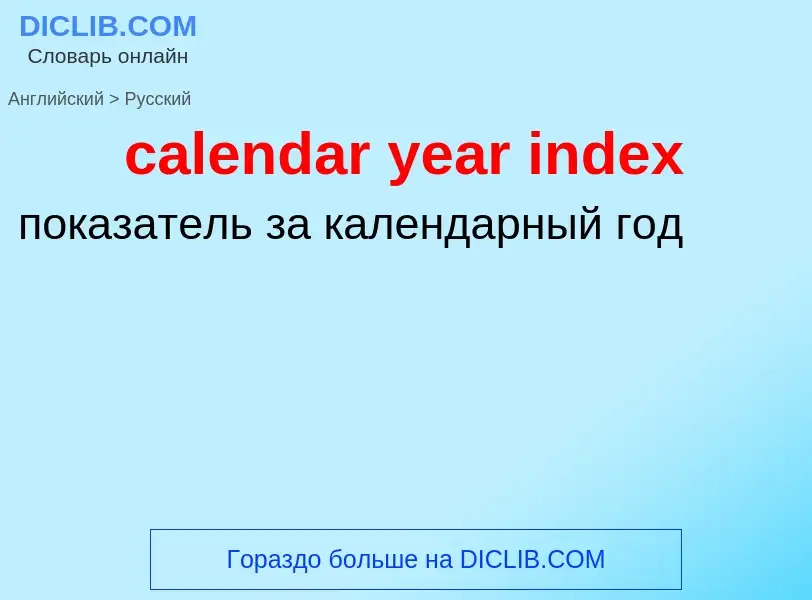Vertaling en analyse van woorden door kunstmatige intelligentie ChatGPT
Op deze pagina kunt u een gedetailleerde analyse krijgen van een woord of zin, geproduceerd met behulp van de beste kunstmatige intelligentietechnologie tot nu toe:
- hoe het woord wordt gebruikt
- gebruiksfrequentie
- het wordt vaker gebruikt in mondelinge of schriftelijke toespraken
- opties voor woordvertaling
- Gebruiksvoorbeelden (meerdere zinnen met vertaling)
- etymologie
calendar year index - vertaling naar russisch
['kælində]
синоним
Definitie
Wikipedia
Generally speaking, a calendar year begins on the New Year's Day of the given calendar system and ends on the day before the following New Year's Day, and thus consists of a whole number of days. A year can also be measured by starting on any other named day of the calendar, and ending on the day before this named day in the following year. This may be termed a "year's time", but not a "calendar year". To reconcile the calendar year with the astronomical cycle (which has a fractional number of days) certain years contain extra days ("leap days" or "intercalary days").The Gregorian year, which is in use in most of the world, begins on January 1 and ends on December 31. It has a length of 365 days in an ordinary year, with 8760 hours, 525,600 minutes, or 31,536,000 seconds; but 366 days in a leap year, with 8784 hours, 527,040 minutes, or 31,622,400 seconds. With 97 leap years every 400 years, the year has an average length of 365.2425 days. Other formula-based calendars can have lengths which are further out of step with the solar cycle: for example, the Julian calendar has an average length of 365.25 days, and the Hebrew calendar has an average length of 365.2468 days. The Islamic calendar is a lunar calendar consisting of 12 months in a year of 354 or 355 days. The astronomer's mean tropical year, which is averaged over equinoxes and solstices, is currently 365.24219 days, slightly shorter than the average length of the year in most calendars.


![A white coloured [[parament]] hangs from the [[pulpit]], indicating that the current liturgical season is [[Christmastide]]. The fact that the Christ Candle in the centre of the [[Advent wreath]] is lit also indicates that [[Christmas]] has arrived. A white coloured [[parament]] hangs from the [[pulpit]], indicating that the current liturgical season is [[Christmastide]]. The fact that the Christ Candle in the centre of the [[Advent wreath]] is lit also indicates that [[Christmas]] has arrived.](https://commons.wikimedia.org/wiki/Special:FilePath/Advent Wreath on Christmas Eve (Broadway United Methodist Church).jpg?width=200)
![The month of October from a liturgical calendar for [[Abbotsbury Abbey]]. 13th-century manuscript ([[British Library]], [[Cotton MS Cleopatra]] B IX, folio 59r). The month of October from a liturgical calendar for [[Abbotsbury Abbey]]. 13th-century manuscript ([[British Library]], [[Cotton MS Cleopatra]] B IX, folio 59r).](https://commons.wikimedia.org/wiki/Special:FilePath/BritLibCottonCleoBIXLiturgicalCalOct.jpg?width=200)
![East Syriac Catholic churches]]. East Syriac Catholic churches]].](https://commons.wikimedia.org/wiki/Special:FilePath/East syrian Liturgical calender.png?width=200)

![Theophany]] (the baptism of Jesus by [[John the Baptist]]) (6 January), the highest-ranked feast which occurs on the fixed cycle of the [[Eastern Orthodox liturgical calendar]] Theophany]] (the baptism of Jesus by [[John the Baptist]]) (6 January), the highest-ranked feast which occurs on the fixed cycle of the [[Eastern Orthodox liturgical calendar]]](https://commons.wikimedia.org/wiki/Special:FilePath/Bogojavlenie.jpg?width=200)

![The [[Tusculum portrait]] of [[Julius Caesar]] The [[Tusculum portrait]] of [[Julius Caesar]]](https://commons.wikimedia.org/wiki/Special:FilePath/Retrato de Julio César (26724093101) (cropped).jpg?width=200)
